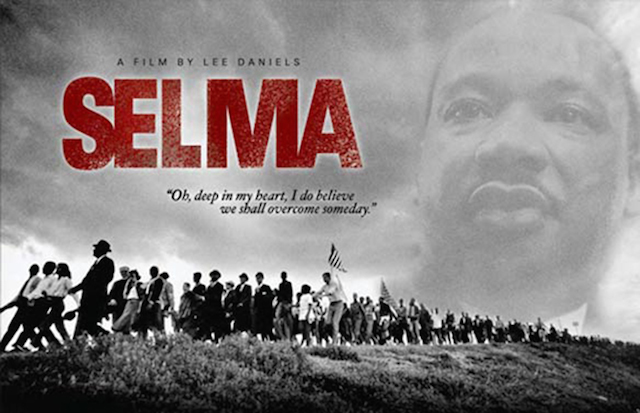This week I had the privilege of viewing an early showing of Selma, a movie about the historical events that took place in Alabama during the summer of 1965. The bombing of the 16th St. Church, in which 4 young girls were killed in 1963 and the passing of the Civil Rights Act of 1964 were not far from the public consciousness then. And the battle between hate and rights that unfolded that summer in Selma changed the course of American history in profound and essential ways.
There are those who will and have already begun to quibble with the historicity of “Selma” but as a white rabbi who trained as a historian and has devoted the last five years to civil right in the Jewish community through my work at Be’chol Lashon, it is my hope that ALL Americans, no matter race or religion go to see the film.
Telling the story of a movement set in the context of 200 years of history, in 127 minutes means that inevitably some of the lines between history and myth will be blurred. But do not underestimate the power in the cinemagraphic telling of history. Color returns dimensionality to images that we know only in shades of black and white. Camera angles bring out the intimacies and tensions that go into the small moments that make up epic events. In the rabbinic tradition we call filling in of the official narrative, midrash, or interpretation. And midrash is one of most powerful tools we have to teach us about the past, remind us of our values and focus our actions for the future.
Copyright limitations, for example, mean that the words spoken by the fictional Dr. Martin Luther King Jr. are not direct quotations. Nonetheless, the power with which David Oyelowo delivers his portrayal of Dr. King provide us not only with the inspirational Moses figure to whom a monument stands in Washington DC but also the flesh and blood man who struggled with frailty and doubt even as he rose to the challenges of leadership. These nuances encourage us to reach beyond our failing and to see the possibilities of action.
Watching, it was hard at times for me to engage with Oprah Winfrey’s portrayal Annie Lee Cooper. In contrast to the real life powerhouse and billionaire Winfrey, Cooper was a middle school dropout and worked in an old age home. Cooper came to fame after her repeated attempts to register to vote led to a confrontation with the county Sheriff and her punching him. On the one hand I was too aware of Winfrey’s sophisticated real world persona to fully embrace the portrayal. But on the other hand, I saw the casting as a tribute to the extraordinary power of the everyday African Americans who, in standing up to Jim Crow white power, were no less regal than the real life Ms. Winfrey.
Within the Jewish community I hope that white Jews will look beyond the desire to have Jewish contributions to the historic Civil Rights movement recognized. Past involvement is no free pass for present day obligations. This movie should inspire white Jews to take a look within our synagogues, schools, picture books, and organization and to consider how to engage with African Americans and other Jews of Color not as the “other” but as members of our own communities. Are white Jews able to say that we do not question their membership? Their right to vote? Or legitimacy? There are many tools and approaches that we can incorporate into daily Jewish life that can and will make a profound difference, now, today and for the future for how Jews think and act around race and ethnicity.
Our sage Hillel, one taught that the entire Torah can be summed up in the maxim, we should love our neighbors as we love ourselves. The rest he assured is commentary, but it is commentary that we are obligated to learn. If the movie Selma does not fulfill all the historical details faithfully, or speak to all of our needs, it does present us with a strong case for the importance how we treat our neighbors. If we walk away inspired to aim higher in creating a more fair and inclusive world, to learn and do more, then we have achieve something momentous.







